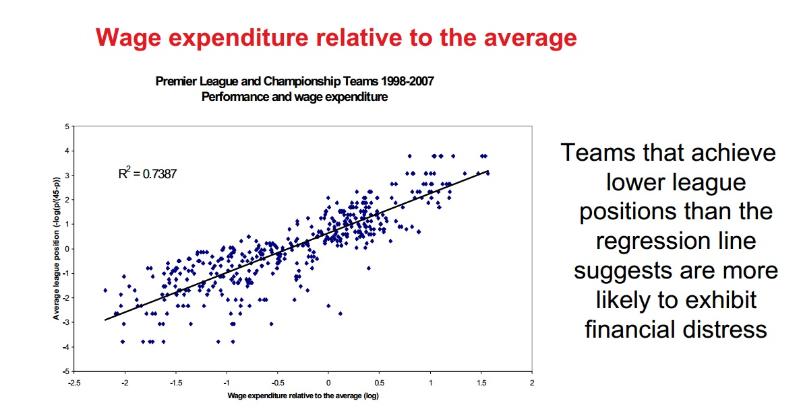Spending for a Competitive Advantage
Article published 1 April 2012
At the Soccerex conference in Manchester, one of football's foremost Administrators, Trever Birch (with Leeds and Portsmouth on his CV), outlined how "the Championship is a scene of carnage with clubs pursuing the Holy Grail of promotion, losing between £5 million £10m a year and a third of them spending over 100 per cent of turnover on wages." Birch had previously explained that the problems at Portsmouth had resulted from the club aiming to gain a 'competitive advantage' by paying high wages. I thought the attached graph from Cass Business School is relevant here and it shows how Premier League and Championship clubs' wage spend corresponds to league position:

As we would expect, the figures show that, in general terms, the higher the wages, the higher the likely league position. Once a club reduces its wage bill then it is less likely to achieve league success. Interestingly, most 'outliers' are scattered significantly below the line and mainly amongst the clubs that spend less than the average. These represent the clubs who spend below the average on wages and who suffer relegation-level failure on the pitch. This is interesting if we consider Birch's comments; any club that doesn't keep up with the average spend of their competitors becomes more likely to suffer catastrophic under-performance. This helps to explain the wage-escalation in the Championship and the Premier League; the risk of relegation is greatly reduced once a club pushes their wage-spend above average levels. The problem with this scenario is that drives up the general level of wages - each year clubs need to spend more just to keep up with the average.
blog comments powered by Disqus
